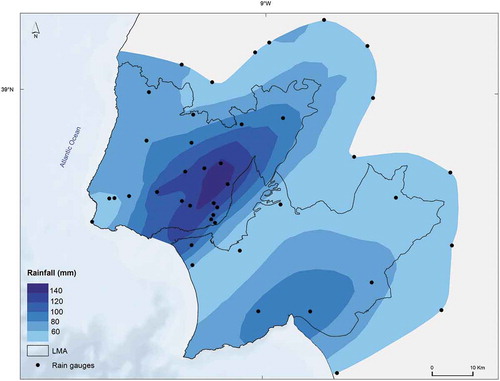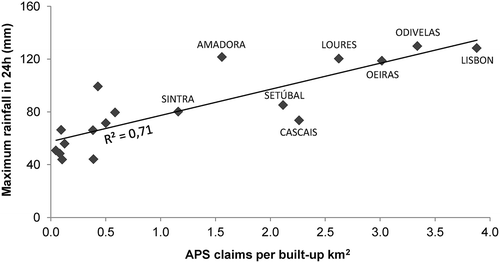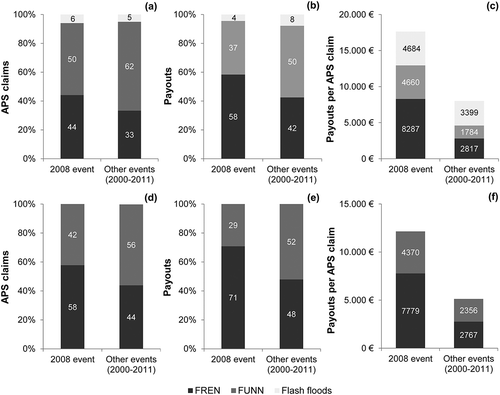Figures & data
Table 1. Statistical data of the municipalities in the LMA. Built-up areas (2007); buildings, dwellings and inhabitants (2011).
Figure 1. Location of the study area, showing the raingauge locations and the municipalities of the Lisbon Municipal Area (LMA).
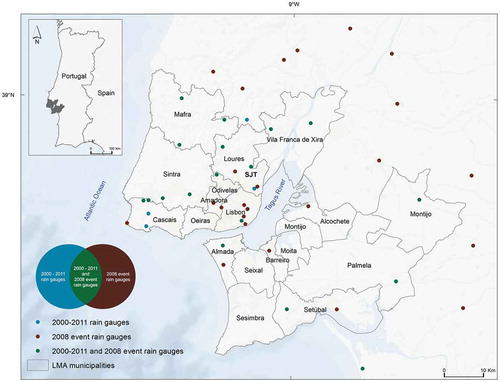
Table 2. Definitions of the concepts used in this research.
Figure 2. Large-scale atmospheric circulation and dynamic features of the extreme event of 18 February 2008: (a) 500 mb geopotential heights (dam), (b) sea-level pressure (mb), (c) total column water vapour (mm), (d) convective available potential energy (J kg−1). All panels refer to 12:00 h UTC on 17 February 2008. Source of reanalysis data: www.ecmwf.int.
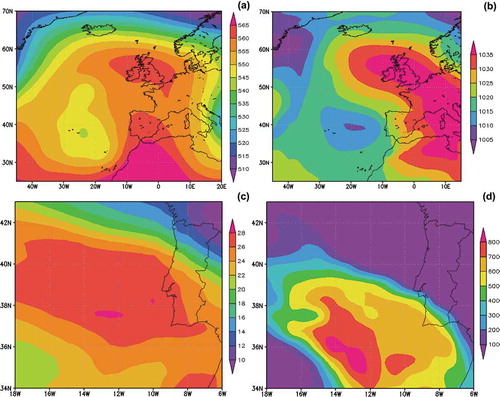
Figure 4. High-magnitude rainfall in the LMA at the São Julião do Tojal raingauge: (a) annual maximum daily rainfall for the period 1938/39–2011/12 and (b) IDF curves for several return periods and for the 1967, 1983 and 2008 rainfall events.
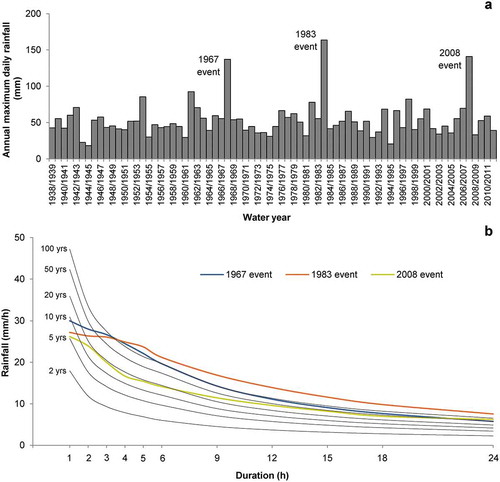
Figure 5. Temporal evolution of APS claims and payouts in the LMA (2000–2011): (a) number of APS claims and payouts, (b) accumulated APS claims and payouts.
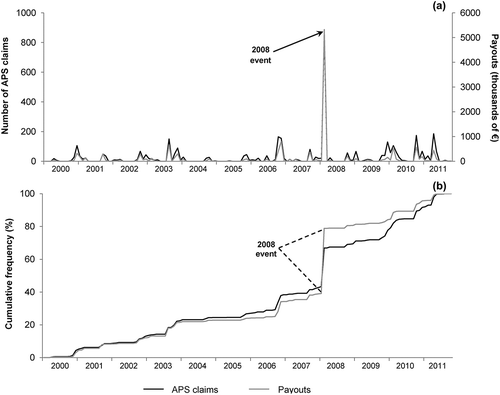
Figure 6. Annual and monthly values of insurance data in the LMA (2000–2011) and the weight of the 2008 event: (a) number of APS claims per year, (b) payouts per year, (c) APS claims per month and (d) payouts per month. Note: the APS database ends in October 2011. This year only has records for 10 months; November and December values are therefore the result of accumulated values of only 11 years of records, unlike the other months (12 years).
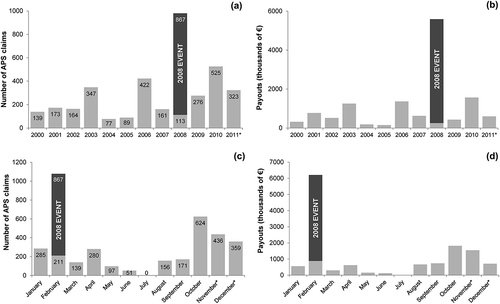
Figure 7. Spatial distribution of the total APS claims (2000–2011) and those resulting from the 2008 event in the LMA.
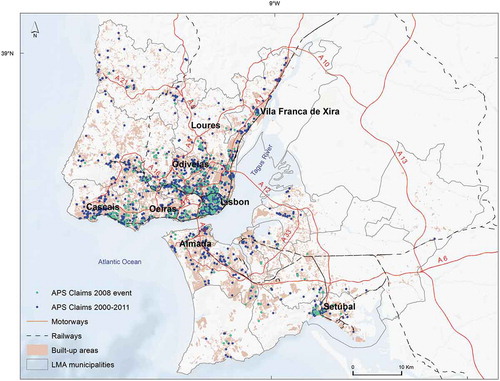
Figure 8. Rainfall vs APS claims for each APS event at 1, 3, 6, 12 and 24 hours on the SJT raingauge. Note: only the APS events with APS claims located within a 10 km radius of the SJT raingauge are represented.

Figure 9. Temporal evolution of four rainfall events that caused a different number of APS claims in a 10 km radius of the SJT raingauge.
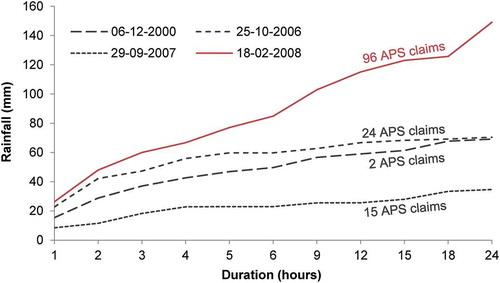
Table 3. Correlation matrix between land use/cover, building features and insurance data for the LMA municipalities. LIN: linear regression; LOG: logarithmic regression.

